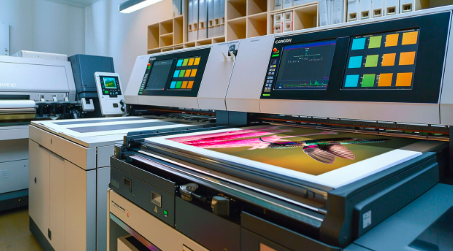Bridging the Gap Between Offline and Digital Printing

The lines between online and offline printing are becoming less defined. Businesses that once relied solely on digital ads or email campaigns are now rediscovering the impact of physical mail, especially when automation brings both speed and personalization into the mix.
Offline marketing has traditionally been seen as slow, resource-intensive, and harder to track. But with the rise of automation technologies and direct software integrations, that narrative is changing. Companies no longer have to choose between digital efficiency and offline trust—they can combine both for a more effective marketing and operational strategy.
Let’s explore how this balance is achieved through modern mailing solutions, particularly in check printing and direct mail campaigns.
Modernizing Payment Workflows with Automation
Many businesses—especially in sectors like legal, finance, insurance, and property management—still rely heavily on physical checks. Despite the adoption of digital payment platforms, checks remain a preferred method for certain transactions due to their traceability, compliance standards, and documentation value.
Yet, the traditional process of issuing checks is laborious. It involves manually printing each check, verifying details, signing, stuffing envelopes, and mailing them out. This process is prone to delays, human error, and in some cases, security risks.
A check printing API offers a practical solution by automating this entire workflow. Instead of printing and mailing checks manually, businesses can initiate payments directly from their software platforms, such as an ERP or accounting system. The API handles the generation, printing, and mailing of the check with full compliance and tracking.
This not only reduces processing time and error rates but also improves internal efficiency. Finance teams can focus on strategic decision-making rather than being bogged down by routine paperwork. It also ensures consistency across payments, regardless of volume or geography.
Security and Compliance in Financial Communications
When sending physical payments, security and compliance are non-negotiable. Every printed check contains sensitive information—from bank details to payee information—and needs to be handled with care.
Modern check printing solutions are built with these concerns in mind. They offer encryption, secure print facilities, audit trails, and address verification, ensuring each check is processed correctly and reaches the intended recipient.
Moreover, using a check API ensures adherence to industry-specific regulations, whether you’re operating in the U.S., Canada, or globally. It simplifies reporting, improves cash flow visibility, and helps reduce fraud by removing manual touchpoints.
Direct Mail Marketing as a High-Impact Channel
On the marketing front, the conversation around physical mail has undergone a shift. Far from being obsolete, direct mail is proving to be a powerful tool—especially when personalized, timely, and data-driven.
One of the most effective ways to manage this at scale is through automated direct mail marketing. These platforms allow businesses to launch personalized postcard, letter, or flyer campaigns without ever handling a piece of paper themselves.
You can trigger a mailpiece based on customer behavior—say, if someone abandons a cart, downloads a whitepaper, or doesn’t respond to an email within a set time. These workflows can be built within your CRM, marketing automation tool, or directly via API integrations, blending seamlessly into your existing funnels.
Read also: The Benefits of Using Bid and Proposal Management Software for Small Businesses
Why Offline Mail Still Matters
While digital marketing dominates in terms of reach and speed, it suffers from one critical flaw: saturation. Consumers are constantly bombarded with emails, push notifications, and social media ads. As a result, attention spans are shorter, and engagement rates are dropping.
Physical mail, on the other hand, has a tangible presence. It sits on a desk, gets noticed, and often has a higher perceived value than digital communication. Studies have consistently shown that people trust printed materials more than digital ones—especially when it comes to financial or healthcare communications.
When used strategically, offline mail doesn’t just complement digital campaigns—it elevates them. Sending a follow-up postcard after a product demo or a personalized letter to high-value prospects can create a memorable impression that digital alone cannot replicate.
Personalization Without the Pain
The most effective direct mail campaigns are those that feel personal—like they were crafted just for the recipient. But historically, personalizing direct mail has been a labor-intensive task involving variable data printing and complicated mailing logistics.
Automated direct mail platforms simplify this by letting marketers design templates that dynamically populate with user-specific data, such as names, locations, product interests, or recent interactions. You can send one piece or a thousand, with each one uniquely tailored.
The ability to scale personalized communication is a game-changer. It gives marketers the power to run highly targeted campaigns with the same ease and flexibility as sending an email.
Measuring Offline Performance with Digital Precision
One of the biggest challenges marketers used to face with direct mail was attribution. Unlike emails, which provide opens and clicks, traditional mail offered little insight into whether the message was received, read, or acted upon.
That’s no longer the case. With modern automated platforms, you can include personalized URLs (PURLs), QR codes, and promo codes to track engagement and ROI. When paired with CRM data, this allows for full-funnel attribution, helping you understand which campaigns perform best, what your true cost per lead is, and how offline channels influence digital conversions.
Integration Is Key
The success of both automated check printing and direct mail marketing lies in integration. These systems aren’t designed to exist in silos—they work best when connected to your existing workflows.
With a check printing API, your accounting software becomes the command center for disbursing physical payments. With direct mail automation, your CRM or marketing platform becomes the driver for customer engagement across both email and physical mail.
By combining these systems into a unified strategy, you reduce manual overhead, improve customer experience, and gain better control over your communications and marketing outcomes.
Final Thoughts
Efficiency, accuracy, and personalization no longer have to be trade-offs in offline operations. Whether you’re issuing payments or running a customer acquisition campaign, automation tools like a direct mail software can help your business bridge the gap between the physical and digital—offering the best of both worlds.
When offline becomes as intelligent and trackable as online, it becomes an indispensable part of your customer lifecycle strategy.




